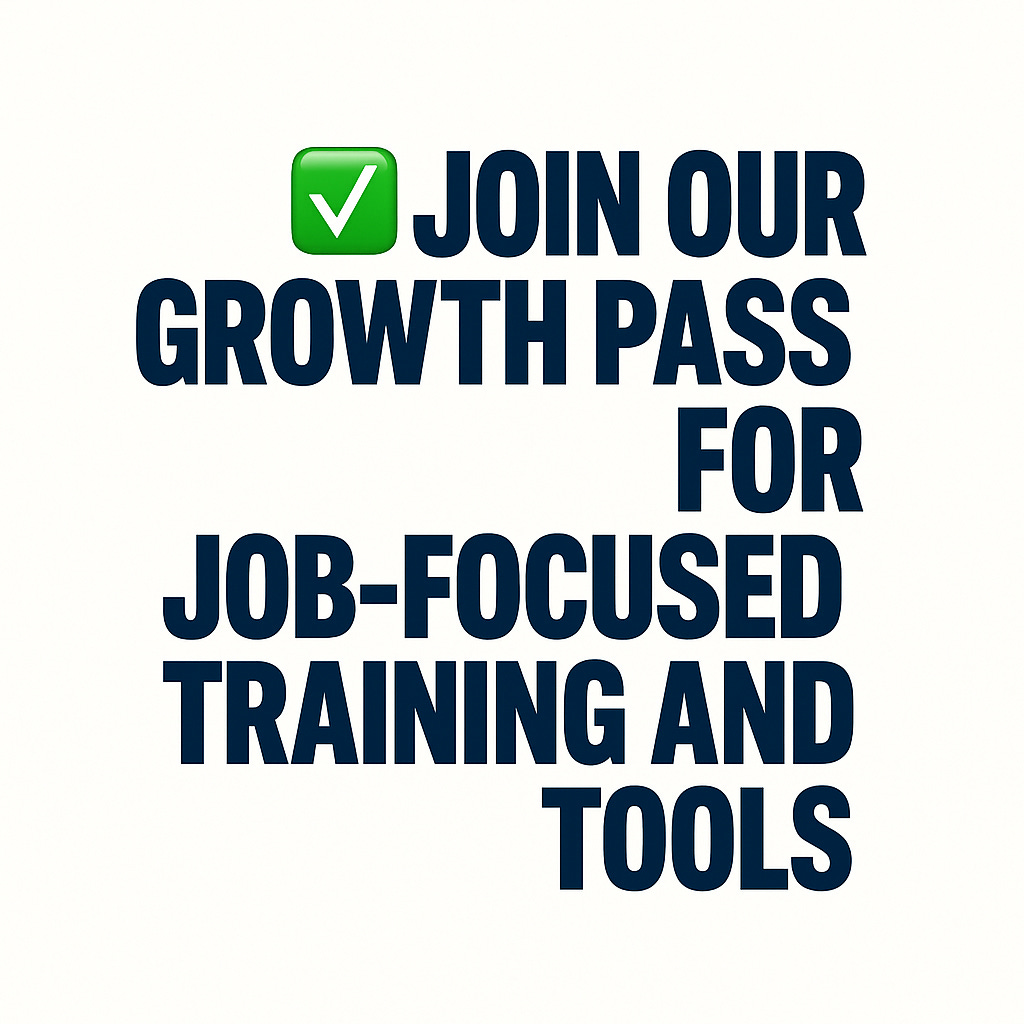The Most Underrated Cloud Skill That Makes You Instantly More Hireable
The #1 Habit That Separates Cloud Beginners Who Get Hired
Why You Should Care
When people think about cloud careers, they rush to study certifications, tools, and technical skills. That’s important but one skill gets ignored over and over again. And it’s the skill that can help you stand out in interviews, get hired faster, and perform better on the job.
That skill? Documentation.
Yes, it sounds boring. But it’s one of the most in-demand habits in cloud roles today especially for beginners.
In this post, you’ll learn:
What documentation really means in cloud careers
Why hiring managers value it more than you think
How to build it into your weekly habits
A free starter template to copy today
A real-life case study of how documentation helped one beginner land a cloud job
What Is Documentation (and Why Is It a Cloud Superpower)?
Documentation means writing down what you do, what you try, and how systems work.
It can look like:
Notes after setting up a virtual machine in Azure
A diagram of your cloud network
A summary of what a pipeline does (and how to fix it if it breaks)
A written plan before you build something
A retrospective explaining what failed—and what you’ll do differently next time
In a cloud job, documentation does 3 big things:
Builds clarity – For your future self and your teammates
Builds trust – Shows hiring managers and clients that you’re thoughtful and organized
Builds scale – Makes it easy for others to follow or maintain what you’ve done
In fact, many companies require engineers to write postmortems after outages, document their architectures, and leave behind detailed handoffs. If you start this habit early, you’ll look like someone who already knows how to operate in a professional environment.
Why Documentation Makes You Instantly More Hireable
1. Hiring managers LOVE organized thinkers
Cloud work is messy. Systems break. Things change fast. When someone can walk into a role and bring structure, notes, and clear thinking—it makes everyone’s life easier.
Even if you’re still learning, your ability to explain your process is a huge trust signal.
2. It shows your thinking, not just your output
Maybe your code didn’t run perfectly. But if your documentation shows you made a plan, tested options, and learned from the process? That’s gold.
In interviews, this is exactly what people want to hear. Your notes can become your talking points. They help you answer:
“Tell me how you’d solve this problem?”
“What did you learn from this project?”
“Have you worked with this technology before?”
3. It creates instant portfolio content
Every time you write a quick summary of what you learned or built, that’s a new LinkedIn post or blog. It helps recruiters find you. It helps YOU remember what you know.
Documentation becomes proof. It’s how you turn studying into visible progress.
And for beginners, it builds confidence fast.
How Beginners Can Practice Documentation
Use the 3-3-3 Plan (our Tech Simplified weekly rhythm):
3 hours learning new skills (videos, labs, courses)
3 hours practicing those skills (projects, labs)
3 hours building your brand (LinkedIn, blog, portfolio)
During practice or branding time, write simple documentation.
Here’s an example:
What I did: Deployed a Linux VM on Azure using the portal
Why I did it: Practicing for AZ-900 certification
Steps: Chose Ubuntu, added NSG, verified connection
Issue I hit: Forgot to open port 22 in NSG; fixed it
What I learned: Always double-check your NSG settings!
This can be:
A LinkedIn post
A Notion doc
A portfolio snippet
Part of your resume or interview prep notes
Repeat this every week. In a month, you’ll have:
A running log of your skills
Several LinkedIn posts
A stronger resume
Better answers in interviews
Real Talk: What If I’m Not Technical Yet?
You don’t need to know everything. You just need to:
Learn something new
Try it
Write about what you did, what worked, and what didn’t
Even if you’re new, this makes you stand out.
Why?
Most people never document
Most beginners doubt themselves
Most applicants don’t explain their process
If you do all three, you become the exception.
No-Fluff Case Study: How One Beginner Got Hired Using Documentation
We’ve seen this over and over inside the Tech Simplified community. One career changer used the 3-3-3 method to build confidence, content, and clarity.
Here’s how:
She set aside time each week to learn, practice, and document.
She wrote short weekly summaries using our Notion template.
She posted her lessons on LinkedIn to track her progress.
In just a few weeks:
She passed the AZ-900 exam
Her LinkedIn started gaining traction
She used her documentation log in job interviews
Instead of rambling about what she knew, she walked interviewers through her notes, lessons, and growth.
That simple documentation habit made her stand out.
It wasn’t about how technical she was—it was about how clearly she could show her thinking.
And that made all the difference.
Action Steps
✅ Use the 3-3-3 Plan this week
✅ Practice documenting one skill you learned or project you tried
✅ Post it on LinkedIn (or write it in Notion or Google Docs)
Here’s a simple writing prompt you can use:
“This week I practiced [skill]. I tried [project/task] and ran into [problem]. I fixed it by [solution]. Here's what I learned: [lesson].”
Use it every week. Tweak it as you grow. It’s a game changer.
What To Do Next
🔁 Reuse this every week to create job-ready habits
🎯 Tag Tech Simplified when you post online so we can hype you up
👩🏽💻 Keep learning, documenting, and growing
Documentation might not be flashy. But it’s how beginners become professionals.
And that’s what makes you hireable.
Always be learning.
Need help with your weekly 3-3-3 plan?
✅ Join our Growth Pass for job-focused training and tools: https://sgtechsimp.com/training




